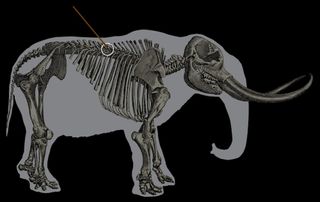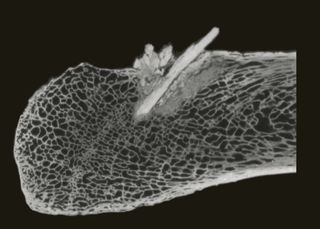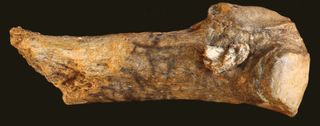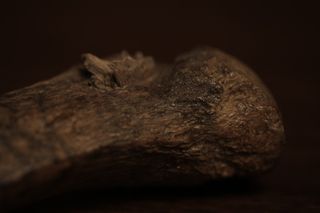Mastodon Bones: Images of an Early Hunt
Mastodon

The Manis mastodon was found with an embedded point of bone in its rib, suggested that an early hunter had speared the animal 13,800 years ago.
Damaged Rib

The embedded point is at the top left of the mammoth rib.
Bone in Bone

High-tech CT scans show the point embedded in the mammoth's rib bone.
Projectile Point

The projectile point was made of the bone of another mastodon. Here is a top view of the rib with embedded point.
Reconstruction

A three-dimensional reconstruction of the entry site on the bone. The projectile point can be seen penetrating the bone surface.
Ancient Damage

This close-up view shows the projectile point entry area on the mammoth rib. The Manis mammoth was old and likely close to death when human hunters took it down.
Sign up for the Live Science daily newsletter now
Get the world’s most fascinating discoveries delivered straight to your inbox.

Stephanie Pappas is a contributing writer for Live Science, covering topics ranging from geoscience to archaeology to the human brain and behavior. She was previously a senior writer for Live Science but is now a freelancer based in Denver, Colorado, and regularly contributes to Scientific American and The Monitor, the monthly magazine of the American Psychological Association. Stephanie received a bachelor's degree in psychology from the University of South Carolina and a graduate certificate in science communication from the University of California, Santa Cruz.
Most Popular


